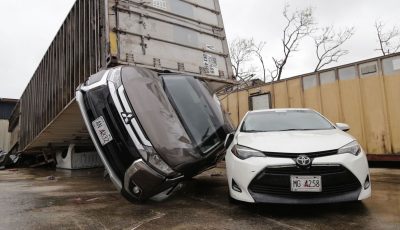FEMA: Cost share will depend on disaster’s severity
The cost-share between the Federal Emergency Management Agency and the CNMI government stands at 75/25, but that can still change depending on the severity of a disaster.
FEMA external affairs representative Larissa Paschyn clarified that the cost-share is outlined in the FEMA-State Agreement.
“Under the Public Assistance Program, the federal government is responsible for supplementing the efforts and available resources of state and local governments when the President declares a disaster or emergency. Because funding provided by the program is supplementary in nature, an appropriate sharing of costs between the federal and state governments must be determined,” said Paschyn in an e-mail to Saipan Tribune.
While the cost share is subject to change, the minimum federal cost share is 75 percent of eligible costs, she added.
“The state grantee determines the distribution of the non-federal share. All applicants, including private non-profit organizations, are subject to the cost share outlined in the FEMA-State Agreement,” she said.
Paschyn added that response operations and commodities are being provided with a 75 percent federal and 25 percent CNMI cost share.
“This includes operating costs and manpower associated with emergency generator power.” This means that commodities FEMA is providing to the CNMI such as food, tents, tarps, etc. are being provided within the 75/25 cost share, with CNMI covering 25 percent of expenses. The generators will eventually be returned to FEMA and/or USACE, and are being loaned with cost share in place as well and once permanent power is restored, the CNMI will return the generators to FEMA and will pay the 25 percent cost share, she said.
Earlier, Lt. Gov. Ralph DLG. Torres mentioned the cost-share and the possibility that the cost could reach millions of dollars.
He said the CNMI Office of Management and Budget and the Department of Finance “will work on the cost.”
Lower share
Delegate Gregorio Kilili C. Sablan (Ind-MP), meanwhile, said he is ready to help, should there be a need to request FEMA to reduce a cost-share agreement between the agency and the CNMI government.
In a letter addressed to Gov. Eloy S. Inos and Lt. Gov. Ralph DLG. Torres, Sablan said that “while it is true that FEMA assistance is nominally offered on a 75/25 federal/local cost-share basis, there has often been some reduction of the local share for disasters in the Northern Mariana Islands and other U.S. insular areas.”
“I want you to know that I stand ready to fully support your request for a reduction of the Commonwealth’s share for FEMA assistance, when the time comes to make that request,” Sablan said. “Obtaining these cost-share adjustments is a procedure that will probably wait until the immediate needs of recovery are past. Determination of the 100 percent federal share for Typhoon Nabi hazard mitigation projects, for instance, did not occur until about six months after the storm.”
Sablan also shared a summary on the increases in the federal share of certain forms of assistance in the nine most recent cases of a Presidential Disaster Declaration in the Northern Marianas.
“Whatever the exact federal/local shares may eventually be, there is no doubt that Typhoon Soudelor has cost the Northern Marianas dearly and the road to recovery is long. Le me assure you that I will work with you in any way I can to reduce the local match of FEMA assistance,” he said.
In a separate document, Sablan outlined the disaster and the corresponding federal share on some of the recent typhoons to hit the CNMI.
For Typhoon Kim (in 1986), the public assistance was at 90 percent, and for Typhoon Roy (in 1988), individual and family grants were at 100 percent and public assistance 90 percent.
For Typhoon Paka (in 1997), individual and family grants and hazard mitigation grants was at 100 percent.
For Typhoon Chata’an (in 2002), public assistance was at 90 percent, while hazard mitigation grants was at 100 percent.
For Super Typhoon Chaba (in 2004), public assistance and hazard mitigation grants were at 90 percent.
For Typhoon Tingting (in 2004) and Typhoon Nabi (in 2015), hazard mitigation grants were at 90 percent and 100 percent, respectively.



























